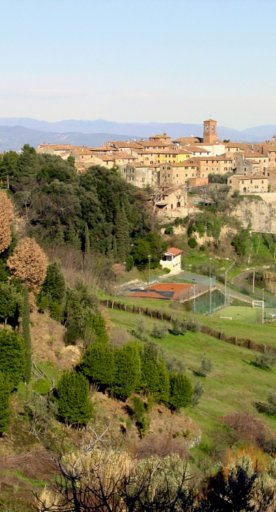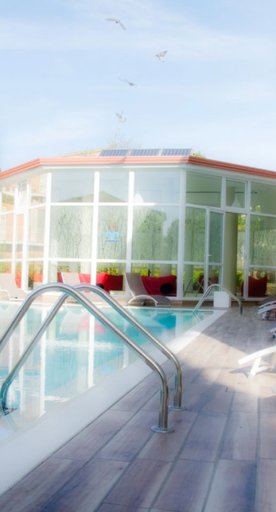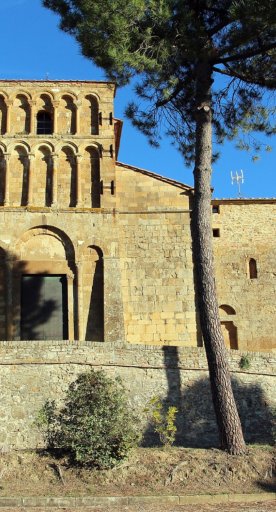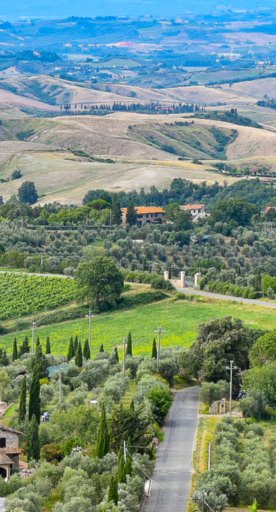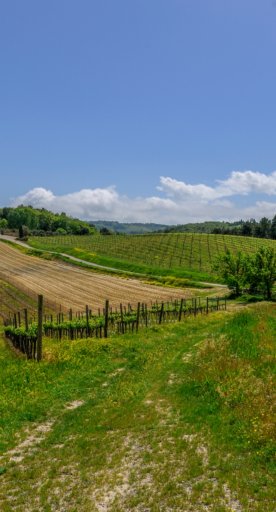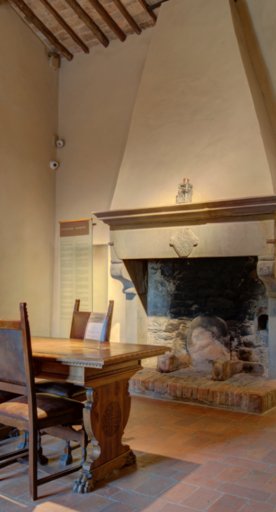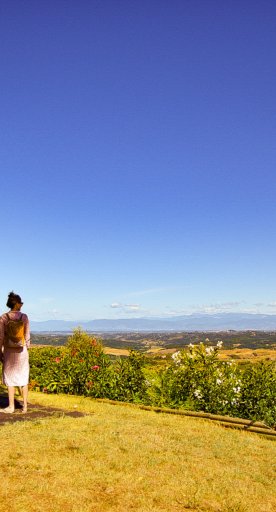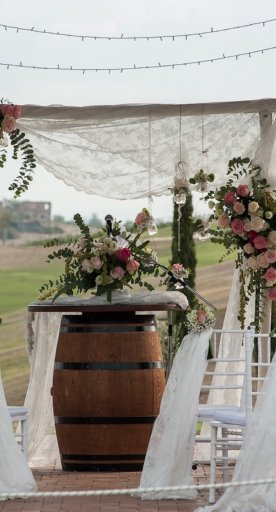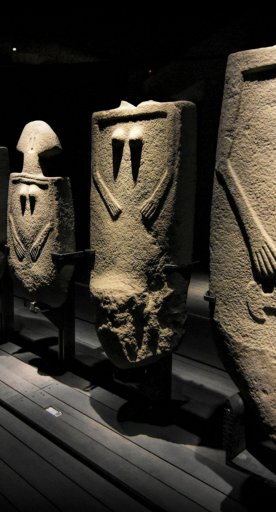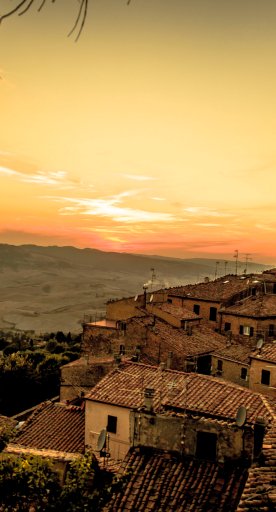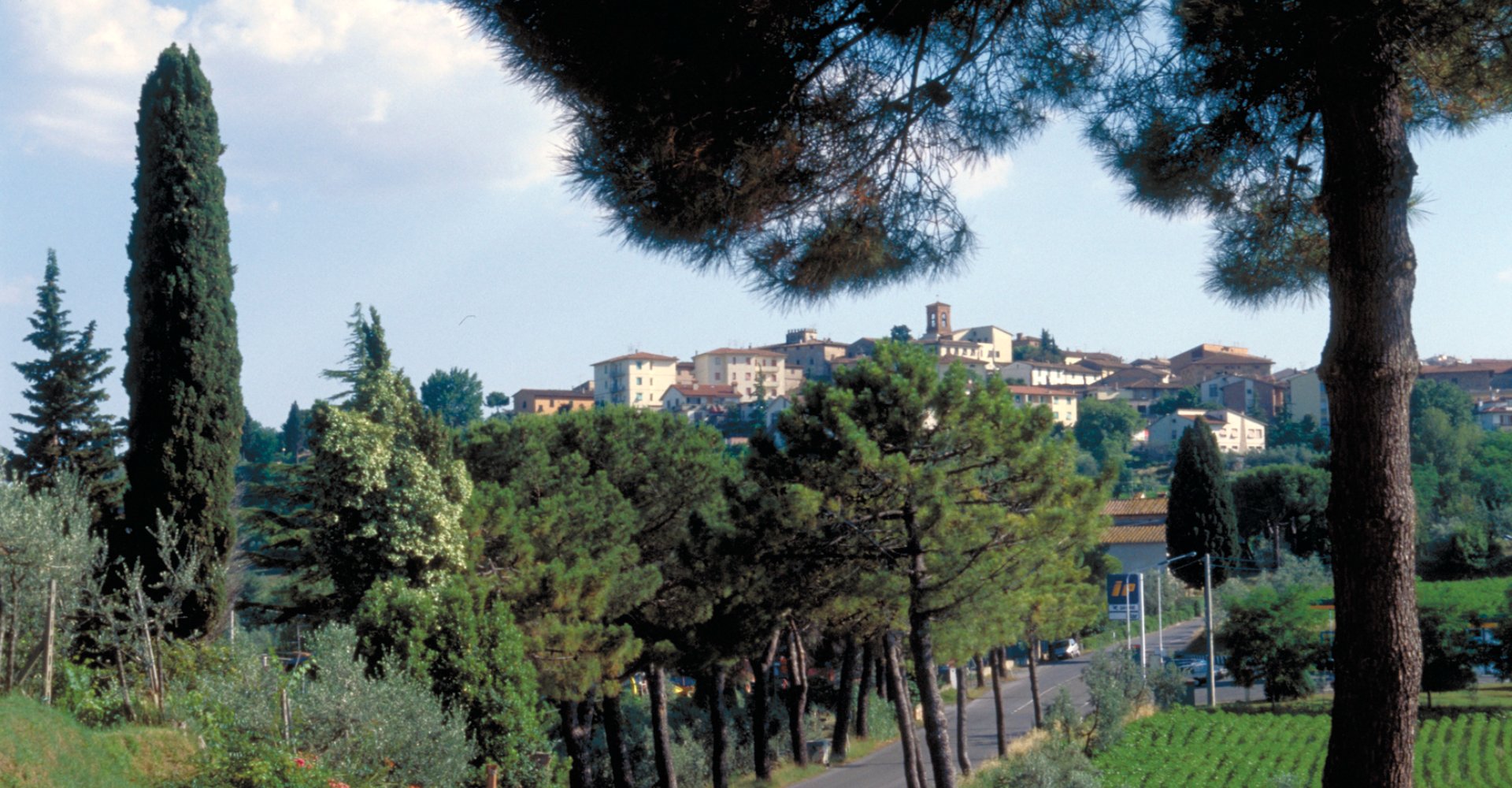
Gambassi Terme
A place of well-being and comfort along the Via Francigena
Gambassi Terme has always been travellers’ territory. It certainly was during the Etruscan period, located as it is on the road to Volterra, and it was when the Romans came, being a junction on the via Clodia between Siena and Lucca.
In the Early Middle Ages, travellers passed through here, especially pilgrims walking the Via Francigena. Archbishop Sigeric of Canterbury did just this, undertaking the itinerary marking the stops along the way to Rome, mentioning the Parish Church in Chianni, only a short distance from Gambassi’s centre.
What to see in Gambassi
If you arrive from the Via Francigena, it’s definitely worth your time visiting the Church of Santa Maria Assunta in Chianni. The church is a fascinating and significant example of Romanesque architecture.
Inhabited at least since the Neolithic Era, the Gambassi area reached its peak between the Etruscan-Archaic period (7th century BCE) and the Late Roman era (3rd century CE). Important ruins (tombs and traces of settlements) were found in the archeological area of Poggio all’Aglione and in many other sites throughout the territory.
Some centuries later, from the Middle Ages to the modern era, the area around Gambassi became known for its glass production, with masters who would practice their craft here. There’s a permanent Glass Exhibition, which displays around 3000 archeological artifacts, both locally and nationally sourced, dating back to the period between the 13th and 14th centuries. The collection is home to historical and archeological studies as well as research on Valdelsa’s glass production.
Gambassi takes its name (since 1977) from the thermal baths that have been found in this area since antiquity. Still very much a highlight of the area, the spa resorts are immersed in the greenery of the Benestare Park. When deciding where to establish the resorts, it was thought that it would be a good idea to ensure an easily accessible experience and one that is both medically and scientifically specialized, in an ideal context for environmental and historical-artistic conditions.
If you arrive from the Via Francigena, it’s definitely worth your time visiting the Church of Santa Maria Assunta in Chianni. The church is a fascinating and significant example of Romanesque architecture.
Inhabited at least since the Neolithic Era, the Gambassi area reached its peak between the Etruscan-Archaic period (7th century BCE) and the Late Roman era (3rd century CE). Important ruins (tombs and traces of settlements) were found in the archeological area of Poggio all’Aglione and in many other sites throughout the territory.
Some centuries later, from the Middle Ages to the modern era, the area around Gambassi became known for its glass production, with masters who would practice their craft here. There’s a permanent Glass Exhibition, which displays around 3000 archeological artifacts, both locally and nationally sourced, dating back to the period between the 13th and 14th centuries. The collection is home to historical and archeological studies as well as research on Valdelsa’s glass production.
Gambassi takes its name (since 1977) from the thermal baths that have been found in this area since antiquity. Still very much a highlight of the area, the spa resorts are immersed in the greenery of the Benestare Park. When deciding where to establish the resorts, it was thought that it would be a good idea to ensure an easily accessible experience and one that is both medically and scientifically specialized, in an ideal context for environmental and historical-artistic conditions.
Nearby
The abundance of activities for every type of traveller is one of the large and varied Empolese Valdelsa’s most evident characteristics. The territory, overlooked by the gentle Tuscan countryside with alternating woods and cultivated fields, is surrounded by villages of considerable urban and historical significance.
Leg 30 going from San Miniato to Gambassi passes through the town, as well as the communes of Castelfiorentino and Montaione, as well as Leg 31 which goes from Gambassi to San Gimignano.
The abundance of activities for every type of traveller is one of the large and varied Empolese Valdelsa’s most evident characteristics. The territory, overlooked by the gentle Tuscan countryside with alternating woods and cultivated fields, is surrounded by villages of considerable urban and historical significance.
Leg 30 going from San Miniato to Gambassi passes through the town, as well as the communes of Castelfiorentino and Montaione, as well as Leg 31 which goes from Gambassi to San Gimignano.
Events
Gambassi Terme’s Palio delle Contrade involves the city’s four districts: Membrino, i’Porcello, La Pieve and Belveder. Each compete in various skill tests, ending with the traditional tubing race that finishes the competition.
Throughout the week of the Palio - the last of September - Gambassi’s historic centre is filled with shows, parades, concerts and stalls offering typical local products.
In June, the Gambassina is celebrated in Gambassi. For an entire week, the town comes to life with a whole host of events. Everything is dedicated to the rediscovery of local flavors and food and wine specialties, as well as to the enhancement of the famous Via Francigena routes. There are scheduled activities, visits and artisan tastings in companies, art exhibitions and excursions on foot or horseback, giving you the chance to put yourself in the shoes of the travelers and pilgrims from the Middle Ages.
Gambassi Terme’s Palio delle Contrade involves the city’s four districts: Membrino, i’Porcello, La Pieve and Belveder. Each compete in various skill tests, ending with the traditional tubing race that finishes the competition.
Throughout the week of the Palio - the last of September - Gambassi’s historic centre is filled with shows, parades, concerts and stalls offering typical local products.
In June, the Gambassina is celebrated in Gambassi. For an entire week, the town comes to life with a whole host of events. Everything is dedicated to the rediscovery of local flavors and food and wine specialties, as well as to the enhancement of the famous Via Francigena routes. There are scheduled activities, visits and artisan tastings in companies, art exhibitions and excursions on foot or horseback, giving you the chance to put yourself in the shoes of the travelers and pilgrims from the Middle Ages.
